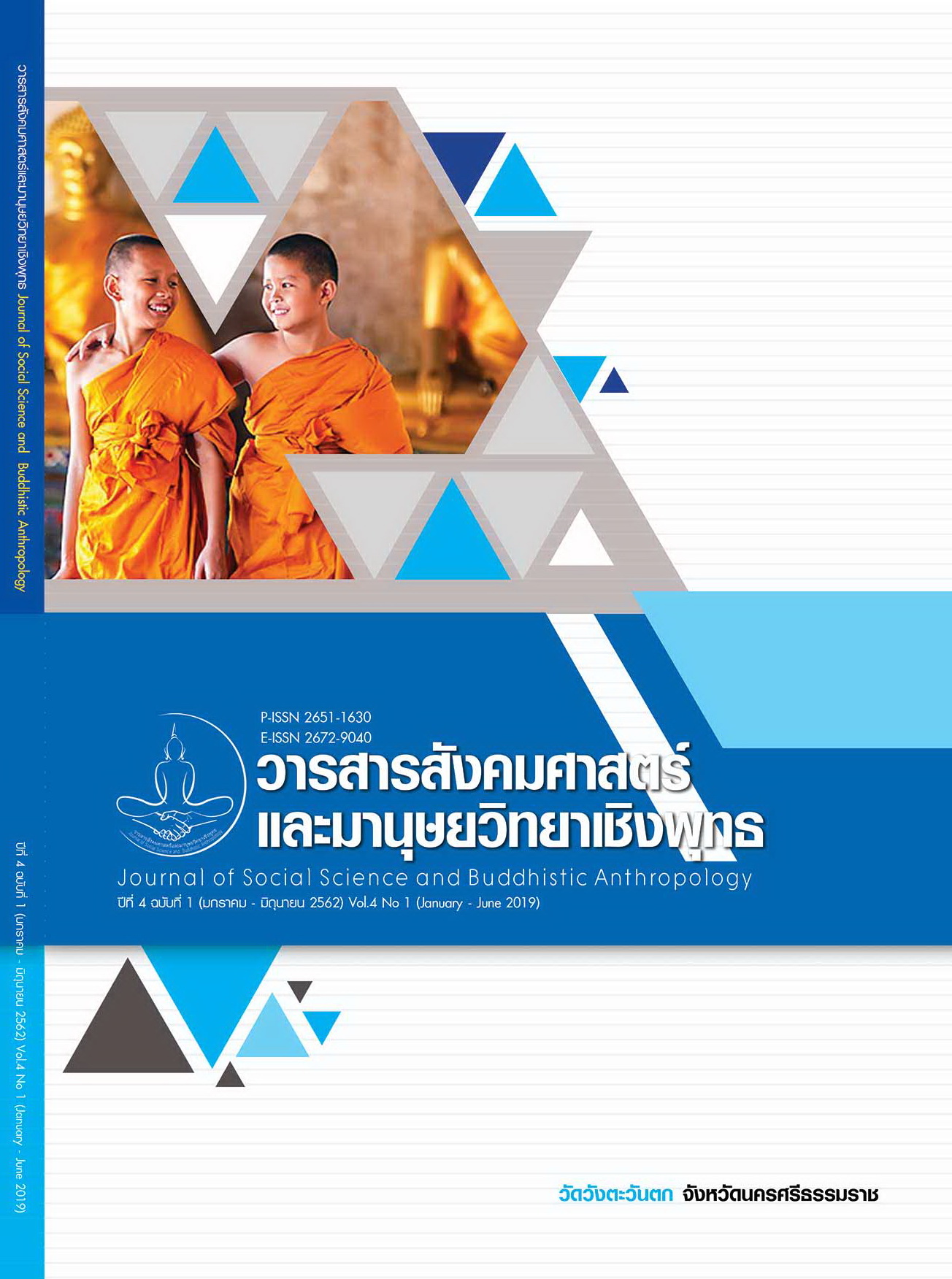AN ANALYTICAL STUDY OF ENLIGHTENMENT OF BANDHITA SAMANERA
Keywords:
Enlightenment, Bandhita Samanera, Theravada BuddhismAbstract
The objectives of this thesis were as follows 1) To study the history of Pãramĩ accumulation and enlightenment of Bandhita Samanera 2) To study processes of the enlightenment by following Tripitaka (Buddhist scripture) in Theravãda Buddhist doctrine. and 3) To research about pattern and new knowledge of enlightenment of Bandhita Samanera in Theravãda Buddhist doctrine. this qualitative research by study about the enlightenment of Bandhita Samanera in Theravãda Buddhist doctrine that mean Tripitaka, commentary, Pali textbook and other relate scripture. unstructured interview form. Then compiled into descriptive to propose experts for examined and corrected suggested by, using an analytical study process to contribute to the integration and creation of new knowledge.
The study revealed that:
- The history of Pãramĩ accumulation and enlightenment of Bandhita Samanera who was born in PraKassapa Buddha period, he was miserable person. On day he and his wife offered food to Buddha and then Buddha gave him felicitation after finished the meal he was pleased. He became a rich person after that he always made merit until he passes a way. Next he was in place of worship and he was born again with older daughter of family who was support to Pra Sariputra. His mother gave his name “Bandhita” when he was 7 year old he became Samanera by Pra Sariputra and then 4 day after he was listen to 4 Drama of Buddha he became Arhant.
- The processing of enlightenment of Bandhita Samanera Theravãda Buddhist doctrine found that there are 2 kinds of Vipassana meditation, first Samathayanik was plainly basic until win yourself and then found 5 kinds of first stage of meditation such as Vitok (nervous), Vichan (comment), Pitisuk (happy), Akukata (one mood) and the second totally Vipassana meditation that depended on Khanika meditation mean focus on present emotion until management of mental and intellectual growth, always aware until took Vipassana.
- The new pattern and new knowledge about of enlightenment of Bandhita Samanera Theravãda Buddhist doctrine such as how to comply with Samathakarmathan and Vipassanakarmathan when Bandhita Samanera practice to consider all drama until he had no more passion in order.
References
พระคันธสาราภิวงศ์. (2551). เนตติอรรถกถา . (พิมพ์ครั้งที่ 1). กรุงเทพมหานคร: ห้างหุ้นส่วนจำกัด ซีเอไอเซ็นเตอร์.
พระมหาวิสุทธิ์ ธมฺมธีโร. (2558). ศึกษากัลยาณมิตรที่มีผลต่อการบรรลุธรรมในพระพุทธศาสนาเถรวาท. ใน วิทยานิพนธ์พุทธศาสตรมหาบัณฑิต สาขาพระพุทธศาสนา. มหาวิทยาลัยมหาจุฬาลงกรณราชวิทยาลัย.
พระโสภณมหาเถระ (มหาสีสยาดอ). (2548). วิปัสสนานัย เล่ม 2. นนทบุรี: ไทยร่มเกล้า.
มหาจุฬาลงกรณราชวิทยาลัย. (2539). พระไตรปิฎกภาษาไทย ฉบับมหาจุฬาลงกรณราชวิทยาลัย. กรุงเทพมหานคร: โรงพิมพ์มหาจุฬาลงกรณราชวิทยาลัย.








